- December 01, 2020
- By Maryland Today Staff
The danger and the dullness arrived hand in hand.
When a deadly virus blossomed in the United States along with the early signs of spring, regular life came to a sudden stop. Schools and offices closed. Movie theaters, churches and stadiums went dark. Highway signs switched from warnings of accidents or lane closures to stern commands to stay home. The cliché “new normal,” often tossed about as casually as loose change, finally seemed apt.
Like the characters in Albert Camus’ novel “The Plague,” we all began to eat the “same sour bread of exile.” The void was first filled by ventilators and PPE, tiger kings and sourdough recipes, unemployment rates and beer deliveries, shortages of Lysol and ground beef. A morning spent staring at deer wandering a suburb could be followed by an afternoon shepherding an antsy elementary schooler through a labyrinth of educational apps and software dashboards.
But weeks stretched into months, and the novelty and distraction of new Netflix shows and Zoom happy hours soon faded as a full year of this way of life became more likely. Summer’s cautious steps toward normality due to falling cases were halted by more outbreaks, and the good news of impending vaccines stays shadowed by the potential of holiday gatherings to overwhelm what slack is left in the medical system.
And all the while, minority populations and elderly victims succumbed at grossly disproportionate rates, one more brutal measure of how a virus can wreak havoc scaled to society’s injustices—a sign that returning to how things “used to be” would not be a solution.
These realities reverberated through the University of Maryland community: in confinement abroad and in commitment to duty, in struggling for economic survival and in facing down health risks to yourself and others to raise your voice against inequality.
Students, alumni, faculty and staff opened up about their experiences in isolation and in tiptoeing back into society, revealing frustrations, pain and hope in the time of the novel coronavirus.
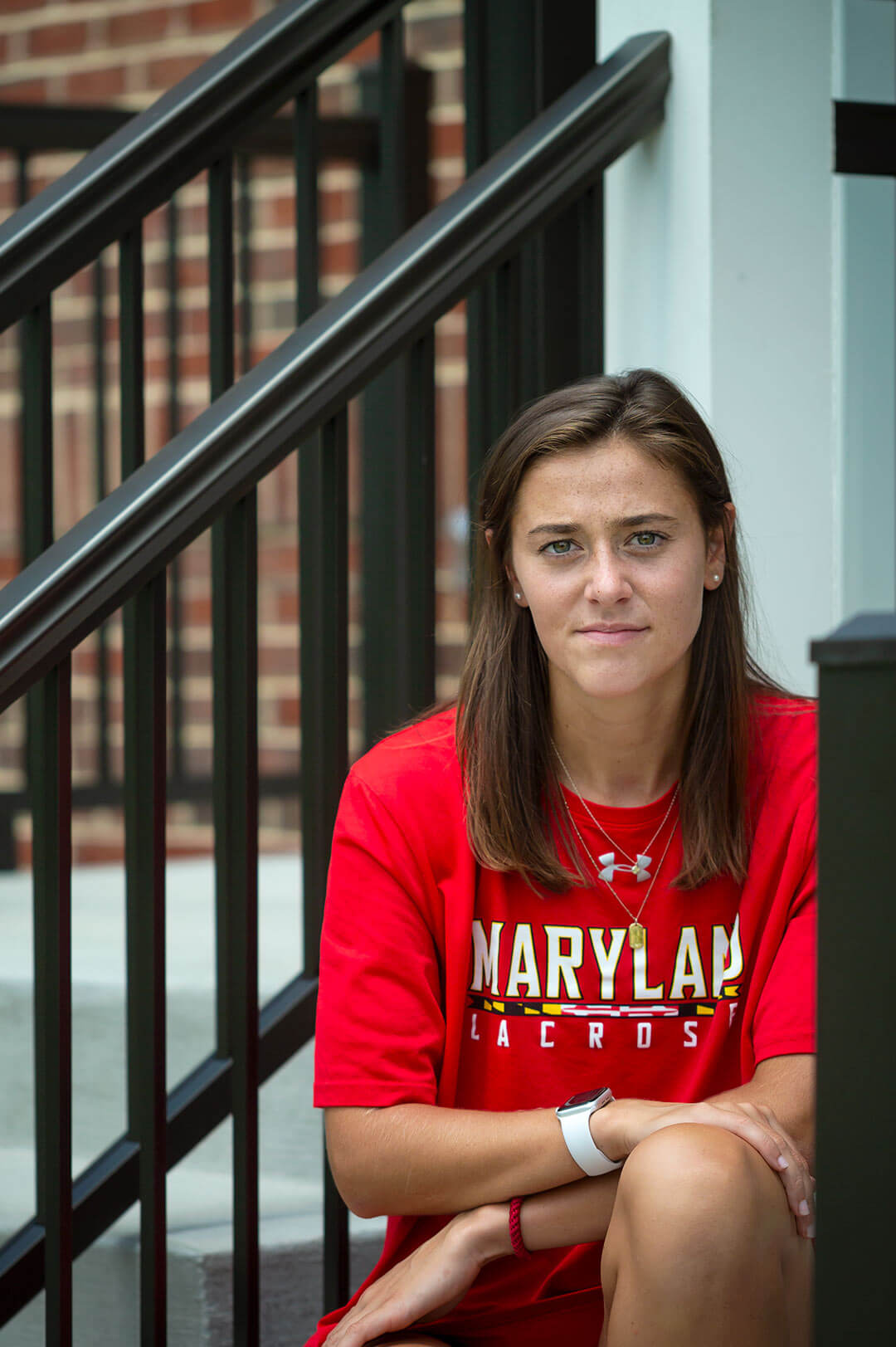 Grace Griffin ’21 is a kinesiology major and midfielder on the Maryland women’s lacrosse team.
Grace Griffin ’21 is a kinesiology major and midfielder on the Maryland women’s lacrosse team.
I remember before what was our last practice, (Head Coach Cathy Reese) sort of saying that this could be it. Things started out normal, then every drill got more and more fun. And it kind of hit us then that, “Oh, this is probably our last practice, because we’re doing all the fun drills.” It maybe lasted an hour, and I remember all of us coming together, and then the official news was broken about our season. There were a lot of hugs, a lot of tears. Every single time I’d make eye contact with one of the seniors, I would just burst into tears even more.
We definitely tried to stay in contact, a lot of team Zooms. I started doing more yoga with my extra free time. Being home, having school at the same time, it’s hard to be motivated and really know what you’re working for. There’s a lot of questions and “what ifs.”
On my Snapchat memories, it would pop up that one year ago today, we had just played a game. Or I’d be looking at our calendar and be like, “We’re supposed to be in Ohio right now playing a game” or “This weekend would be Big Ten championships,” but I’m here at home. This whole thing is teaching you how to value every single second you have playing. I think when we come back, you’ll really see everyone working even harder and just embracing each other and the game so much more because we know how easily it can be taken away.
 Xiaoli Gong, a doctoral student studying applied linguistics in language education, was quarantined with her husband and 5-year-old daughter in Hubei province while visiting family and friends in January. They were evacuated from China shortly before similar measures took effect in the United States.
Xiaoli Gong, a doctoral student studying applied linguistics in language education, was quarantined with her husband and 5-year-old daughter in Hubei province while visiting family and friends in January. They were evacuated from China shortly before similar measures took effect in the United States.
Our plane landed in California and we were divided into groups. Our family went to an Air Force base in Texas for a 14-day quarantine. One of the passengers eventually got sick, and it was very scary.
All of us had a sense of relief when it was over—now we can finally go back to our regular lives. Taking off our masks, I really felt like we had integrated back to society.
Three weeks later we were all quarantined again in Maryland. There was definitely a sense that everything had been reversed, as China was getting much better. I was just worried and anxious. I was supposed to do my schoolwork, but I couldn’t. I had supportive and gentle professors, and that transition was hard but helped me develop resilience and how I should shape my focus. If we are hit again, I feel I can probably manage this better.
Maybe we are socially distanced, but in some ways we are closer. I say “hi” to my neighbor every day; we didn’t do that before this pandemic.
I take walks but do feel I have stayed inside too long. I still feel scared of going out. The racism and discrimination has really made me feel unsafe. Would people shout at me and my daughter?
I really relate to those African Americans who feel scared for their lives or their family’s lives. I used to be a Baltimore schoolteacher, and after Freddie Gray’s death was the first time I learned how scared my students were. Over the years, I have learned people become targets just because of how they look.
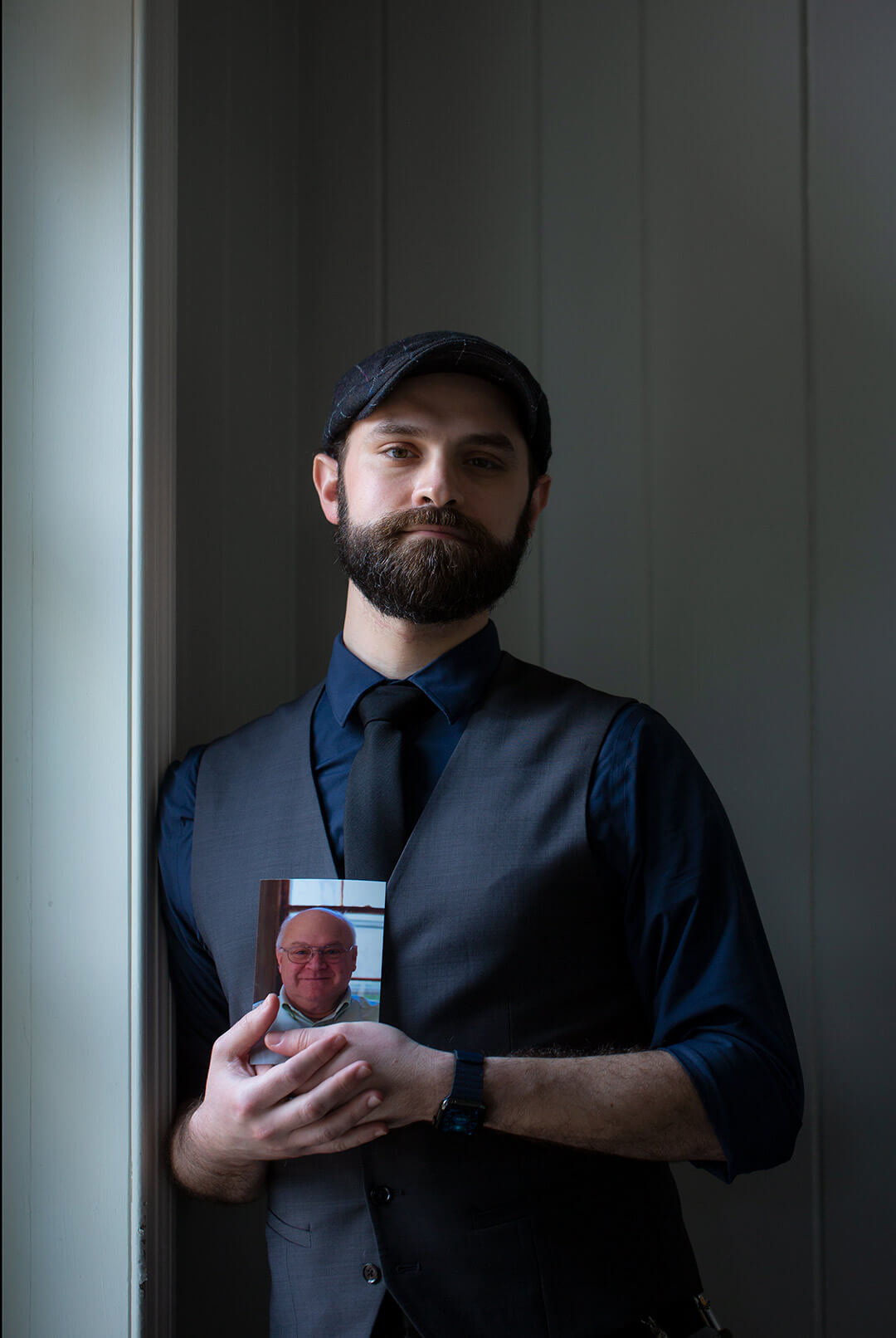 Max Escher is a front-end web developer in the Office of Strategic Communications. His father, Dr. Jeffrey Escher, a geriatrician, died April 26 of COVID-19 after treating nursing home patients with the disease in New York City. He was 72.
Max Escher is a front-end web developer in the Office of Strategic Communications. His father, Dr. Jeffrey Escher, a geriatrician, died April 26 of COVID-19 after treating nursing home patients with the disease in New York City. He was 72.
I was nervous about what he was doing, but because of the kind of person he was and the kind of doctor he was, I wouldn’t in a million years have told him to stop going to work. I remember something he told me right before he passed: He didn’t feel right about leaving his patients or his colleagues just to avoid catching the virus. He was working in a hotspot for COVID-19, but his job was more than a job to him—it was a calling to help people, and he kept pursuing it right until the very end.
He told me one little story about a patient who complained he couldn’t get comfortable in the hospital bed because the bed was putting pressure on his legs. So my father partnered with the nurses to physically lift him into a more comfortable position, which is unusually hands-on for a doctor. He focused on tiny things like that—bedside manner and putting the patient first.
He was sick for maybe a week, not more than a week and a half. He said it felt like a weight on you, like an iron net pinning you down. It was so fast—so fast, in fact, that I talked to him that night, and I really had the feeling things were going to be OK. And then I got a call from my mom the morning after that he had passed away. It wasn’t until later we got the test results—that he had tested positive. She got a letter in the mail.
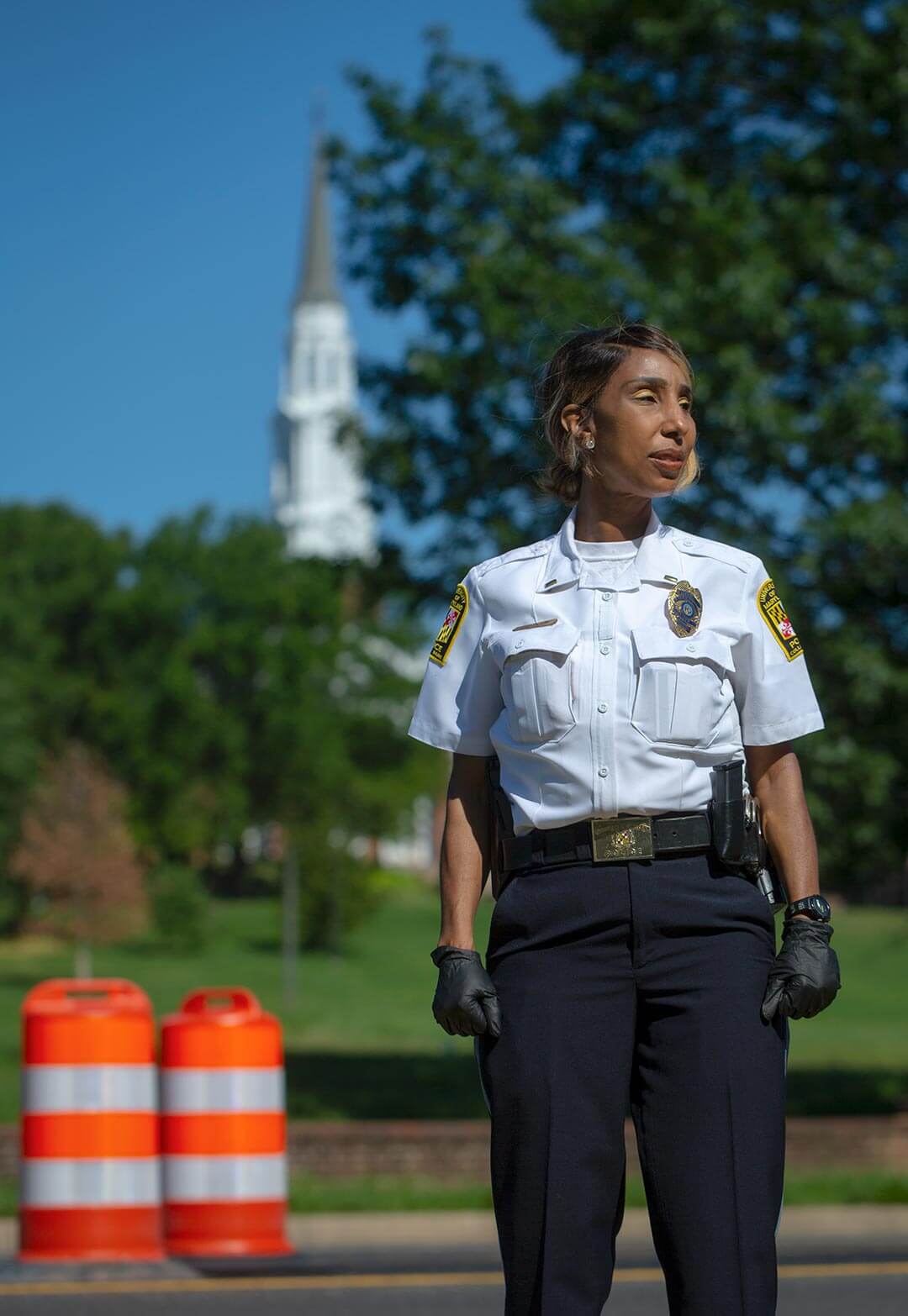 Lt. August Kenner, community policing liason and assistant patrol commander, is in her 23rd year with the University of Maryland Police Department.
Lt. August Kenner, community policing liason and assistant patrol commander, is in her 23rd year with the University of Maryland Police Department.
Even though we haven’t had a large student population lately, we’re accustomed to patrolling and doing our jobs during winter breaks, summer breaks. We’re still here to protect life and property, so nothing really changes from that perspective. What’s different is the health issue. We know there are situations out there as police officers that are going to be unpredictable, but this is beyond that; this is a complete unknown. No one has worked in these conditions before.
I think my biggest fear has been facing that unknown every day: a pandemic with no cure, no vaccine, and you don’t know who has what. So you just focus on what you can control, which is make sure you keep a good distance from the public and other officers, make sure you have your PPE, that you wipe down the cruiser with Lysol every day. The department leadership packs each officer a care bag that has the KN95 mask, a face shield, disinfectant wipes for all our equipment. On each shift, we take our temperature before we come into the building.
The biggest hurdle personally was finding a mask that I felt comfortable in. I am not used to wearing a mask—it is not the norm for us. I sometimes get away from everyone else and take it off—ahh—just so I can have a break.
And then, of course, I just pray every day. Lord, keep me. Because that’s who is keeping me and has kept me for this long. I’m big on that. Prayer works.
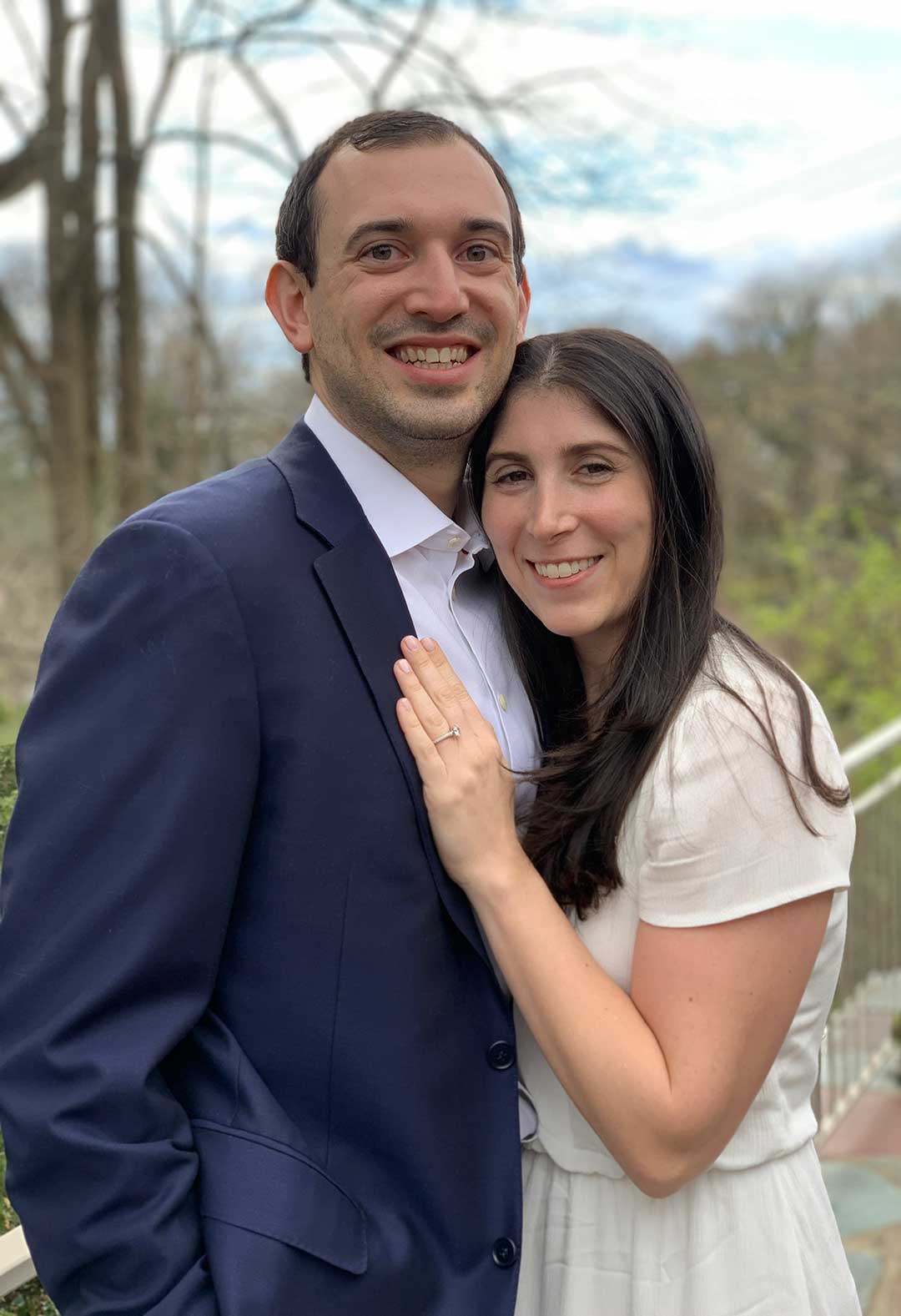 Seth Faber ’15 and Jamie Fishkin ’15 have known each other since they were 2, started dating at 16 and lived two doors apart on Fraternity Row at Maryland. They majored in marketing and communication, respectively, and live in New York City.
Seth Faber ’15 and Jamie Fishkin ’15 have known each other since they were 2, started dating at 16 and lived two doors apart on Fraternity Row at Maryland. They majored in marketing and communication, respectively, and live in New York City.
We went on our bachelor/bachelorette trips in February, and then we came back, and that was when we started talking about COVID-19 more. We had one or two guests who canceled already, who said they didn’t feel comfortable coming. Broadway started closing, everything was closing.
We notified every single guest on email, call, text, on social media: “We’re moving our wedding to July 2021. We can’t wait to celebrate with you then.” But we decided that we still wanted to get married on our original date. We felt we were so ready. Everything was in place for the wedding: We had all our RSVPs in, we had tables organized, and we were about to order our table cards.
We got married on April 4 with more than 200 people on Zoom. The rabbi was able to come out to Seth’s parents’ house, and we borrowed a chuppah. We had our ceremony in the backyard, with just our parents and our siblings.
Everyone afterward told us how it was so much fun having a joyous moment, because everything at that point in time, it was so dark. The rabbi mentioned she was so excited to have this because she’d been doing many funerals.
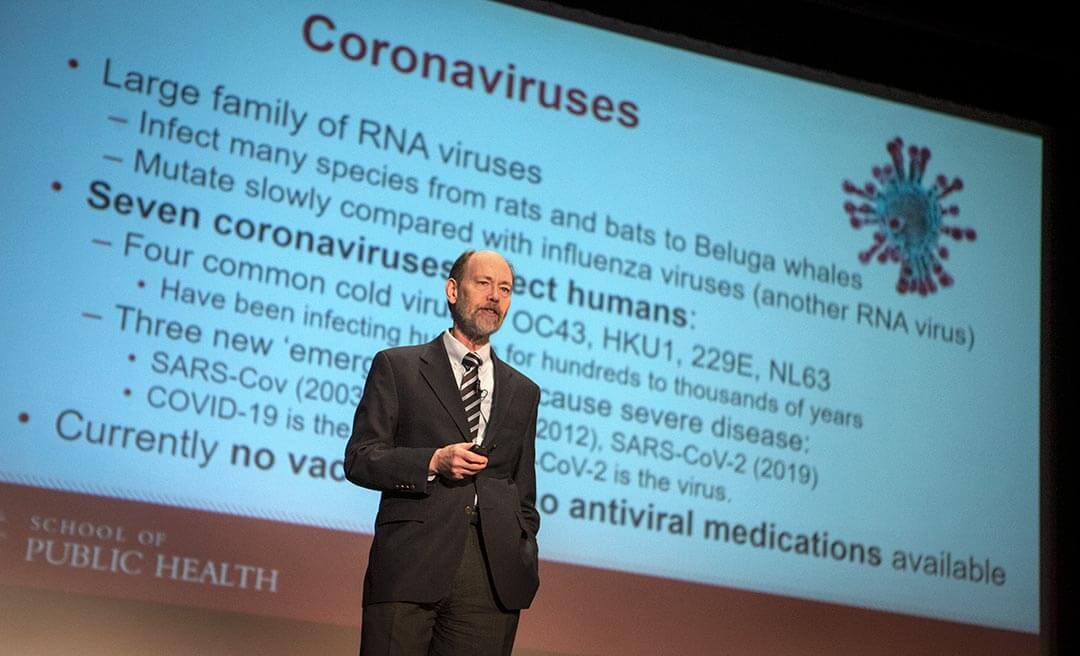 Professor Don Milton, M.D., is a leading researcher on airborne transmission of respiratory diseases.
Professor Don Milton, M.D., is a leading researcher on airborne transmission of respiratory diseases.
My lab was preparing a report the other day for funding agencies on what we’ve done with our time, including outreach to the public. That spreadsheet had 3,109 lines on it—one for each time I’ve had quotes in the press about virus transmission since March 1. Some were stories that got reprinted, but it’s a lot, and maybe my research project would be farther along if I spent less time talking to reporters. On the other hand, it’s important to get the message out.
When I started doing this work on the aerobiology of infectious disease around 1996, there was a tremendous amount of skepticism about the role of aerosols—rather than personal contact or large droplets—in transmitting respiratory viruses. I remember a CDC official telling me they wanted to put the last nail in the coffin of the idea of airborne transmission.
My lab was one of the first to show you could actually culture influenza from the air, which was a game changer for a lot of people. Much of the medical community and the World Health Organization still have a hard time building their recommendations around this, but it’s more and more accepted—it’s why people now believe good N95 respirators for medical workers are so important.
In 2005, the U.S. was preparing a new pandemic preparedness plan, one that was based on simply shutting everything down. And I thought, this is awful—we have to be able to find a way to manage that doesn’t disrupt everyone’s lives and destroy the economy. I thought understanding these aerosols was the key. So I tried to find a way to avoid this calamity, but here we are. Maybe this tragedy will get us past our fear of the idea of airborne transmission and prepare to control it, which could help us to avoid all this next time.
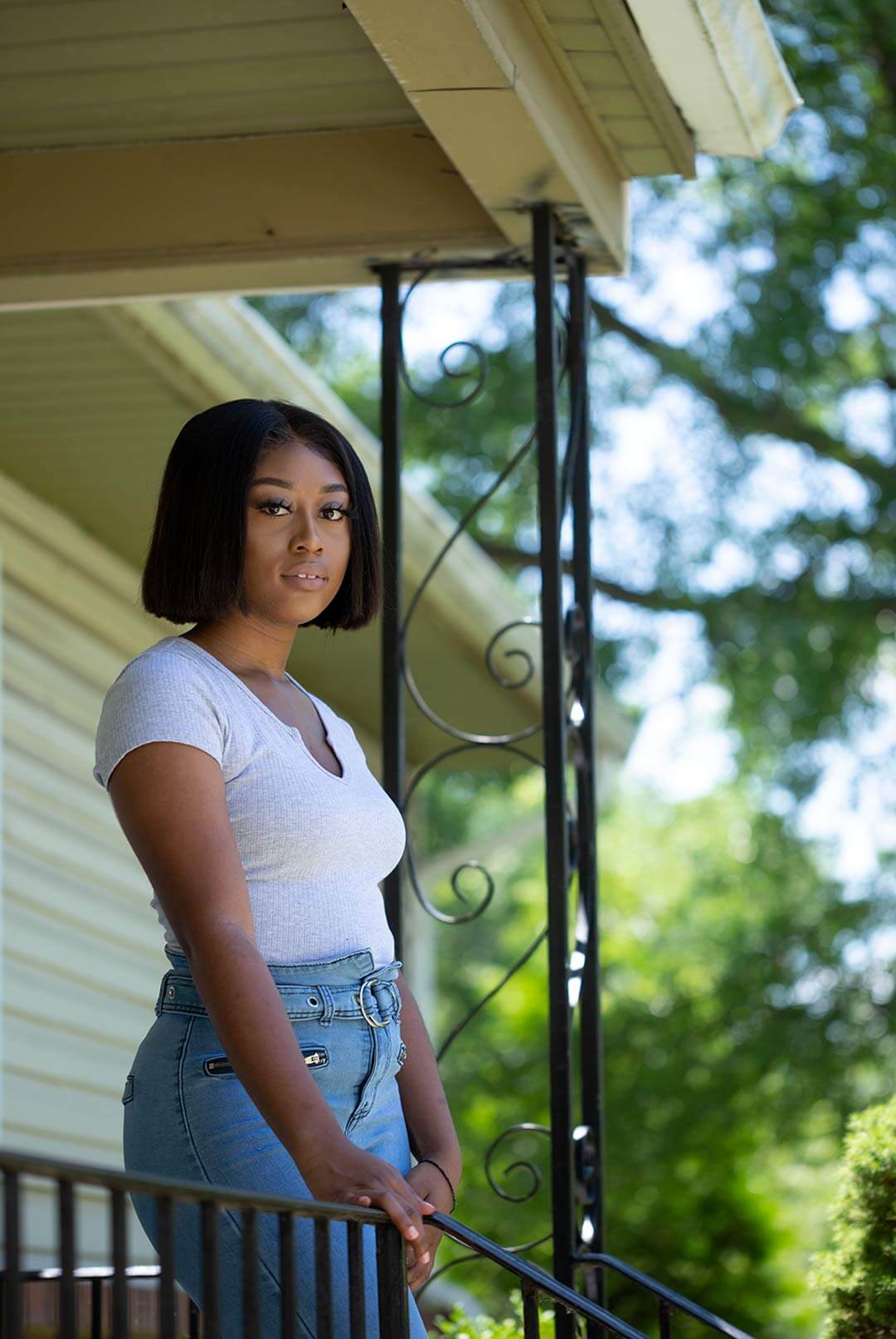 Patience* ’20, an information systems and marketing double major, is one of more than 2,500 students supported since the coronavirus outbreak—and subsequent economic downturn—by UMD’s Student Crisis Fund.
Patience* ’20, an information systems and marketing double major, is one of more than 2,500 students supported since the coronavirus outbreak—and subsequent economic downturn—by UMD’s Student Crisis Fund.
I kind of ran out of money. I realized, wow, rent, utilities, car, insurance, my medical bills—everything was just piling up. My landlord wasn’t giving me any more extensions.
I really felt like I couldn’t do anything, because a lot of the jobs that I always fell back on weren’t available. It takes nothing for a college student to be a waitress and get tips, but that wasn’t an option anymore. I used to do nails for the girls on campus, and that wasn’t an option anymore either. My start date as a technology engineer analyst got pushed back a few months, so I really felt stuck.
(The financial assistance) helped me not panic. The team at the Student Crisis Fund was very understanding. They sent me $1,000; rent per month is $600, so that helped me put some money away, have groceries. It alleviated a lot of my stress.
I feel like the only thing I can do is really pay it forward or share my story to the next person that doesn’t feel comfortable sharing. They’re probably in worse conditions than I am. It’s not about making a sob story or anything. It’s just being honest and saying, “Hey, I need help.”
To donate to the fund, visit crisisfund.umd.edu.
*Patience’s last name is withheld at her request to protect her privacy.
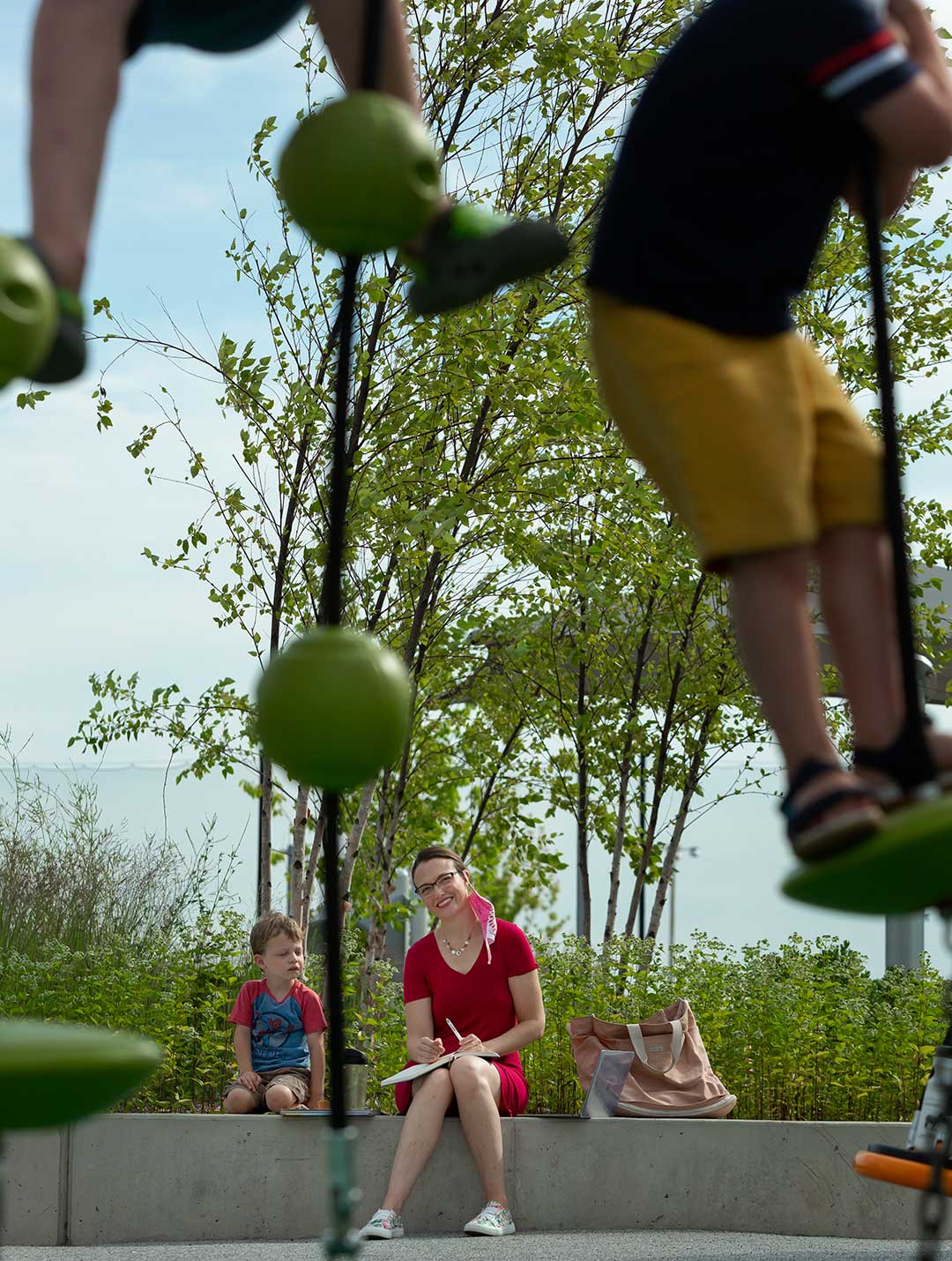 Nicole Coomber is an assistant clinical professor and interim assistant dean of the full-time MBA program at the Robert H. Smith School of Business. She lives with her husband and four sons in Washington, D.C.
Nicole Coomber is an assistant clinical professor and interim assistant dean of the full-time MBA program at the Robert H. Smith School of Business. She lives with her husband and four sons in Washington, D.C.
My doctorate literally says “education,” and I think homeschooling in a pandemic via Zoom is the hardest thing I have ever done. The people that teach our children are very, very good at what they do. I get emotional thinking about it. There is no way you can recreate that in your home.
At the beginning of the pandemic, I kind of just went into summer mode or maternity-leave mode. Both my husband and I do work on weekends. I now have office hours for my students on Sunday night. Sometimes I have to drop everything and just be with my children. I’m doing random things at random times.
I think this will be kind of a crucible for people unhappy with a part of their lives. It’s going to be much harder to lie to yourself, in everything from where you live to what you do to your family situation. If you’re struggling with your work-life balance, it’s going to be much harder to pretend it’s OK.
For me, it’s kind of reaffirmed a lot of choices I made in my life. I passionately love my job and the living situation we have.
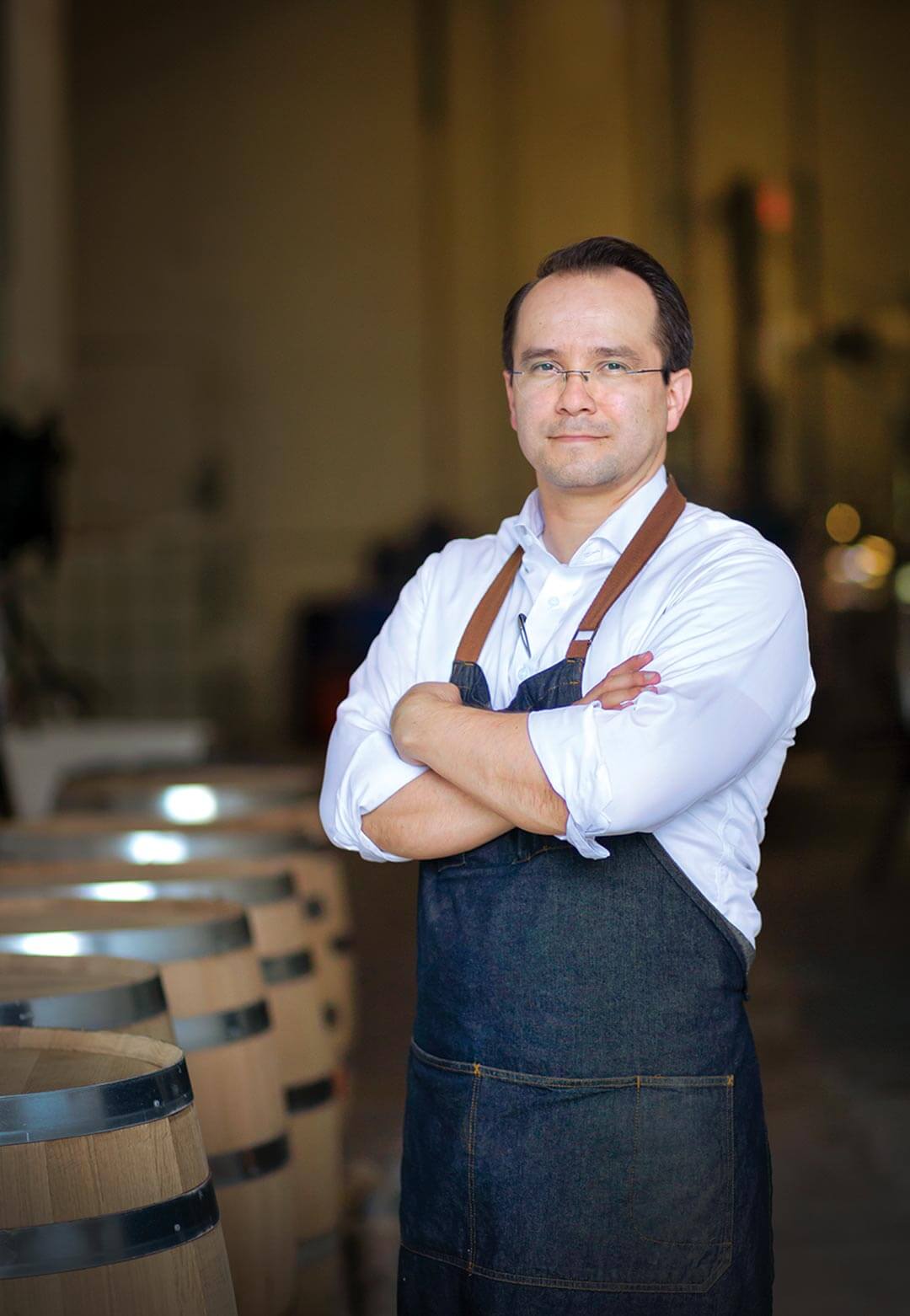 Arthur Shmidt ’06, who majored in mechanical engineering, owns Shmidt Spirits in Beltsville, Md.
Arthur Shmidt ’06, who majored in mechanical engineering, owns Shmidt Spirits in Beltsville, Md.
We officially opened in January, and then COVID hits. It’s put us in a tight spot, but we’re weathering this.
The idea of opening a distillery originated with my family. I’m half Mexican; we have land in a small town called Techaluta de Montenegro, about an hour from Guadalajara, where we’ve talked about making tequila. But to just pick up our lives and leave the United States ... we thought first, why don’t we start a distillery locally to provide a foundation? I’ve always liked whiskey aged in a rum barrel, which spawned the idea of producing spirits with unique finishes.
In March, there were ordinances saying that unless you’re an essential business, you close your doors. And since this is such a small company, I generate much of my revenue from people visiting the tasting room, sampling the spirits and purchasing. Because I don’t have many distributor agreements set up yet, the revenue I was starting to generate just dried up.
The ability to produce hand sanitizer has really saved us, in the short term. The government agency that regulates spirits plants said, “Hey, there’s a sanitizer shortage, and you guys already produce ethanol. We’ll allow you to do this temporarily to provide a service to the community and keep yourselves alive.” In addition to selling it, we’ve also donated hundreds of bottles to the community.
I don’t want to be in the business of hand sanitizer. I can’t wait to get back to making spirits. But I think we might keep giving it to our customers just to say, “Hey, here’s what we did during the crisis. Here’s how we helped.”
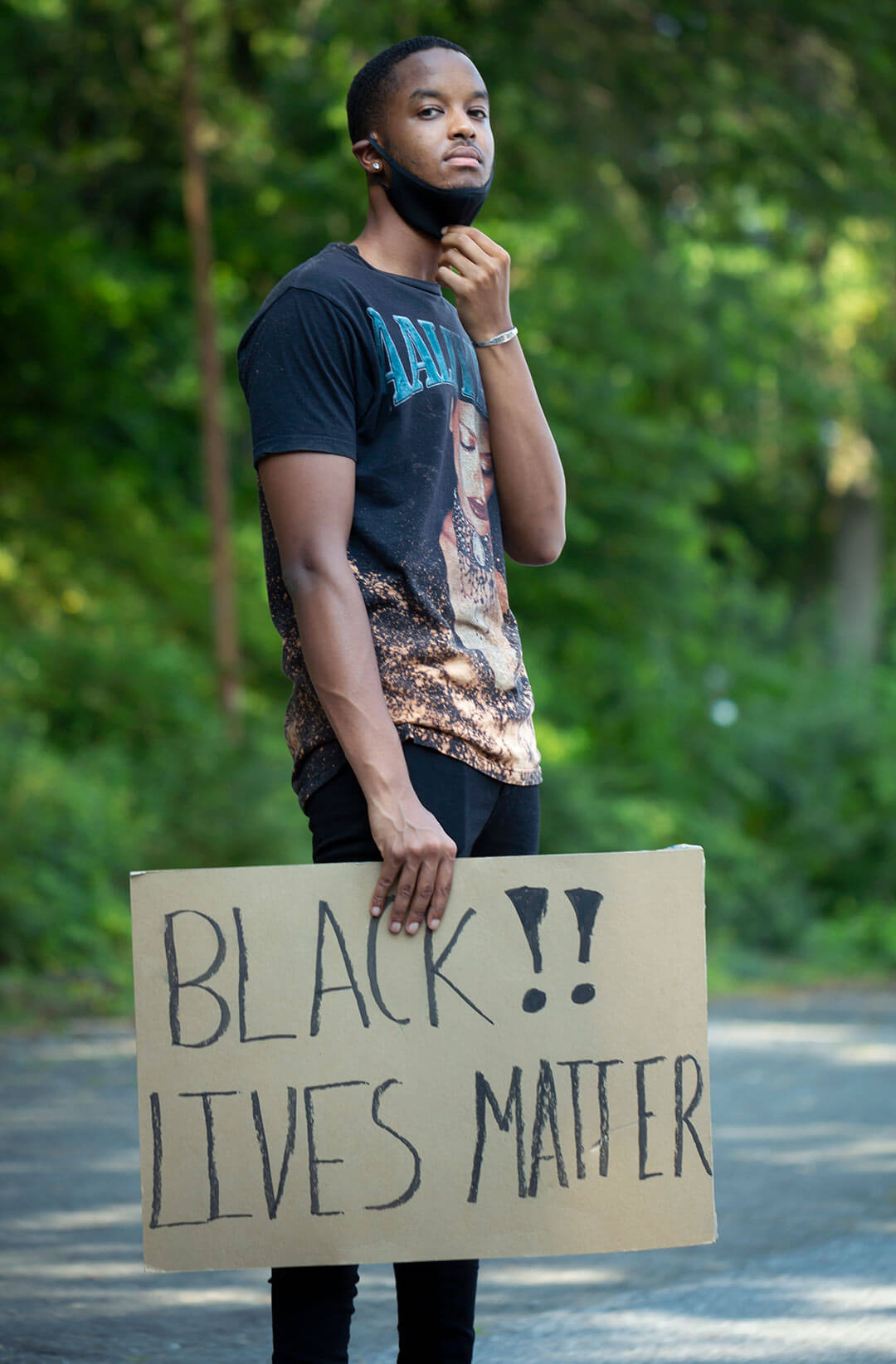 Arsène Mutagoma is a sophomore majoring in public policy. A resident of Takoma Park, Md., he helped organize a protest against police brutality in June following the death of George Floyd in Minneapolis.
Arsène Mutagoma is a sophomore majoring in public policy. A resident of Takoma Park, Md., he helped organize a protest against police brutality in June following the death of George Floyd in Minneapolis.
I made a promise to myself to go to as many protests as I could. It got to the point where I was trying to go to at least one a week.
Protesting during a pandemic was definitely one of the hardest decisions I had to make this year. I talked to my mom a lot, and she got kind of nervous. But I’m a really outspoken person, just in general, and this is an issue I hold dear. I want to become a civil rights lawyer, and I can’t be true to myself and my beliefs if I don’t go out and protest.
I always had my mask on at protests. I always had gloves and I also carried hand sanitizer and limited physical contact with people.
For the protest I helped organize, we told them masks were required on the flyers. We were handing out masks, gloves, little bottles of hand sanitizer. We did want to have an organized protest, but we wanted to make sure everybody felt safe and comfortable.
Topics
People